Jewish History: World War II
Dora Spiegel
Dora Spiegel served in many fields, including education, the organization of league sisterhoods, and publications stimulating women’s loyalty to the synagogue and the Jewish home. She helped found the Women’s Institute of Jewish Studies at the Jewish Theological Seminary of America, influencing the lives of countless Jewish women and children.
Sports in Germany: 1898-1938
Women’s participation in Jewish gymnastics clubs increased significantly during the first two decades of the twentieth century. The Jewish sports movement grew during the 1920s, allowing women to participate in cross-country running, swimming, and tennis. After German sports clubs annulled Jewish membership in 1933, women poured into these Jewish sports groups.
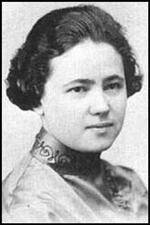
Mollie Steimer
Mollie Steimer earned nationwide attention for her refusal to compromise her anarchist beliefs during the widely publicized 1918 trial in which she was sentenced to prison under the Sedition Act. Later deported to Russia and then to Germany, Steimer continued her anarchist activities throughout her life.

Gertrude Stein
Hannah Stein

Lina Solomonovna Stern (Shtern)
Lina Shtern, biochemist and physician, was the first woman professor at the University of Geneva and the first woman named to the Soviet Academy of Sciences. Born in Latvia, then part of the Russian Empire, she returned to the Soviet Union out of political idealism. A member of the Jewish Anti-Fascist Committee during World War II, she was a victim of postwar repressions that targeted both scientists and Jews.
Eva Michaelis Stern
Eva Michaelis Stern was co-founder and director of the fundraising arm of the Youth Aliyah in Germany, and later the director of the Youth Aliyah office in London. Over the course of WWII, she helped more than 1000 children from countries all over Europe immigrate to Palestine.
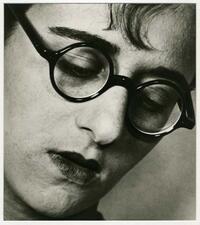
Grete Stern
Grete Stern was one of the founders of Argentina’s modern photography. After studying photography in bohemian Berlin and at the legendary Bauhaus School, Stern developed an unconventional approach to photography, including advertisement collages and studies with crystals, objects, and still-lifes. Between 1935 and 1981 Stern was an influential artistic presence in Argentina, known for her photographic work, graphic design, and teaching.
Lillian Laser Strauss
Lillian Laser Strauss performed pioneering work in public health and child welfare in Pennsylvania, became a lawyer at age fifty, and, in the midst of active legal advocacy for public health, died suddenly of a heart attack at age fifty-six.
Suburbanization in the United States
Jews migrated in large numbers to newly constructed suburbs after World War II and the end of restrictive covenants that had excluded them. During the day, suburbs were largely female spaces where married Jewish women cared for their children and private homes, while volunteering for Jewish and civic activities. Jewish daughters raised in suburbs enjoyed middle-class comforts but also experienced pressures to conform to American gentile ideals of beauty.
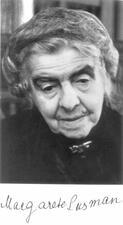
Margarete Susman
Margarete Susman published her first writings, a book of poetry, in 1901 and went on to have a prolific writing career that included plays, books, and journal articles. Susman combined literature and theory, often reflecting seminal texts of modern theory and addressing political issues and women’s rights. Her writings concentrate on the most problematic issues of the modern world: God and human beings, man and woman, Jew and Christian.
Nettie Sutro-Katzenstein
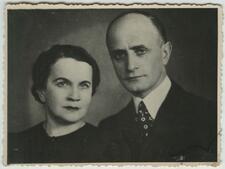
Bela Szapiro
Before World War II, Lublin was one of the largest Jewish communities in Poland. Bela Szapiro’s activities contributed to making it the vibrant cultural and political center of Polish Jewry that it was.
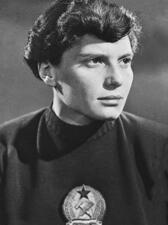
Eva Szekely
Born in Budapest, Eva Szekely was forced to stop swimming during the Nazi occupation of Hungary. However, she returned to the sport after the war and went on to win thirty-two national individual swimming titles and eleven national team titles. At the 1952 Olympic Games in Helsinki, she set a new Olympic record in the 200-meter breaststroke.

Hannah Szenes (Senesh)
Hannah Szenes has attained legendary status in the pantheon of Zionist history. After immigrating to Israel, Szenes agreed to participate in a military operation as a paratrooper. Hungarian authorities captured her and tortured her, but Szenes refused to talk. She was killed by a firing squad in 1944. Szenes mother published her daughter’s diary, poetry, and plays posthumously.
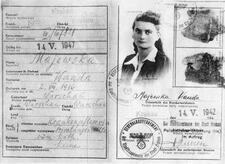
Tema Sznajderman
Tema Sznajderman was a fearless operative in the Jewish resistance to Nazism. She assumed undercover identities to investigate and transfer vital information across borderlines.
Sara Szweber
Sara Szweber was an influential leader in the Jewish labor party, the Bund, first in Belarus, then in Poland, and later in New York.
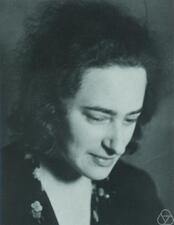
Olga Taussky-Todd
A self-proclaimed “torchbearer for matrix theory,” Olga Taussky-Todd made the previously little-known field essential for scientists and mathematicians.
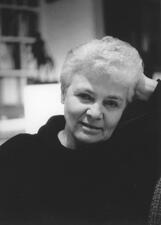
Nechama Tec
Nechama Tec's sociological work, informed by her experience as a Holocaust survivor, addresses the silences and inaccuracies surrounding the Holocaust and reveals untold stories of righteousness and rescue. Her experiences inspired the movie Defiance.
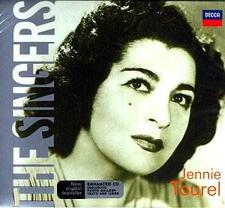
Jennie Tourel
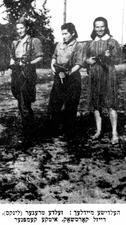
Zelda Nisanilevich Treger
Zelda Treger was born in Vilna, Lithuania, which was occupied by the Germans beginning in June 1941. Treger soon joined the United Partisan Organization (FPO) and was tasked with smuggling groups of residents and supplies out of the ghetto and labor camp. Escaping capture several times, she aided in the liberation of Vilna and ultimately settled in Tel Aviv, where she remained until her death.
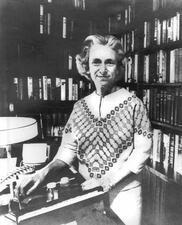
Barbara W. Tuchman
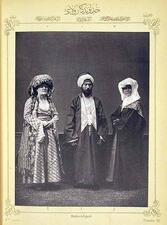
Turkey: Ottoman and Post Ottoman
The Jewish population of Turkey navigated far-reaching changes in the political, social, and geopolitical spheres in the late nineteenth and the early twentieth centuries, as the Ottoman Empire pursued reform and collapsed and the Turkish Republic that took its place imposed a process of “Turkification” on its residents. During this period, Jewish women partook in traditional customs relating to religion, family, and the home, while also accessing new opportunities in the public sphere through education and political engagement.
Liudmila Ulitskaia
Liudmila Ulitskaia is one of Russia’s most famous and celebrated modern writers, known for her voice of moral authority and dissidence against a politically repressive Russian state. Her contemporary realist prose and fiction combines traditional plot and narrative techniques with candid treatment of conventionally taboo subjects such as sexuality, politics, and disease.
Walldorf Camp: Hungarian Jewish Women (August-November 1944)
In addition to the large, well-known concentration camps, hundreds of small labor camps existed during the Second World War, among them the Walldorf Camp at the Frankfurt airport in Germany. On August 19 and 20, 1944, 1,700 Hungarian women between 14 and 44 years of age were selected and taken to Frankfurt to build the first concrete runway for the Messerschmidt 262 jet plane.


